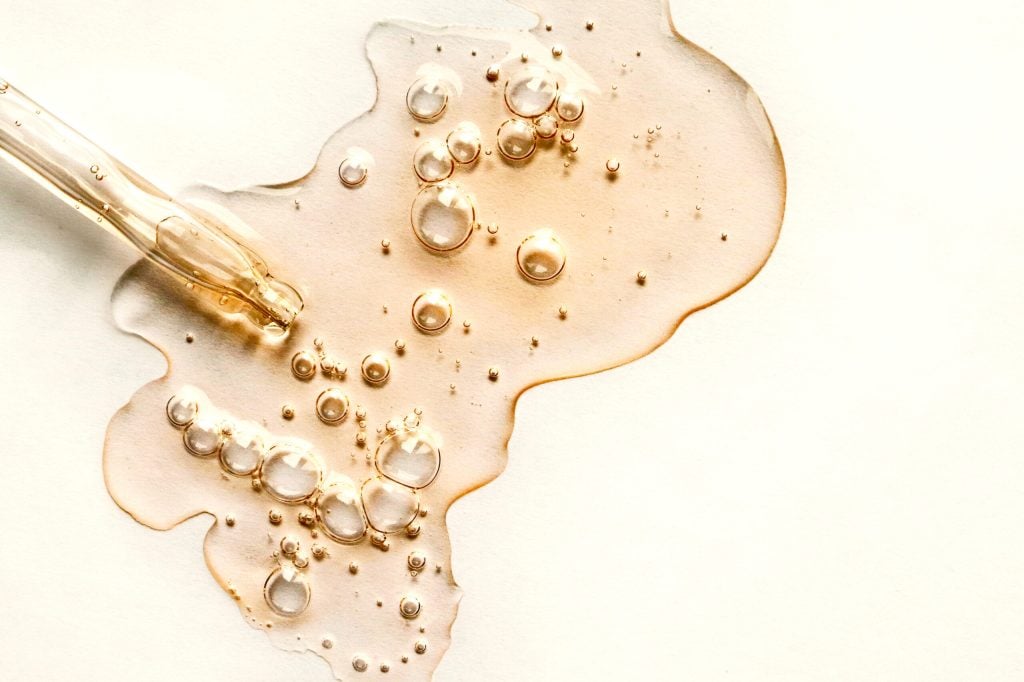Applying the Power of Retinol to Your Sensitive Skin … Here’s How
Retinol is everywhere—and with good reason. Widely touted as the gold standard for anti-aging skin care, products containing retinol can decrease the appearance of wrinkles and fine lines, reduce inflammation, unclog pores, enhance collagen production, and help regulate the growth of cells. Retinol and sensitive skin can be a challenge, but not impossible.
But like most good things, retinols have a downside, especially for those with sensitive skin. Does that mean you have to forego the retinol-enhanced opportunity to look more youthful and brighten your appearance? Not necessarily, because with attentive care and judicious application, you can realize the benefits of retinol without damaging your skin.
What Retinol Is All About
Retinoids are a class of chemical compounds that includes retinol, retinoic acid, retinyl palmitate, retinol aldehyde and a number of other substances; all are derivatives of one of the body’s key nutrients, vitamin A. Following identification of the chemical makeup of vitamin A in 1931 and subsequent isolation of various retinoid derivatives, researchers began experimenting with skin-care applications. In 1971 the first retinoid-based pharmaceutical was approved by the FDA; Retin-A was prescribed for the treatment of acne and remains on the market to this day. But dermatologists quickly noticed that the drug did more than clear up breakouts; it also reduced fine lines, dark spots, wrinkles, and other signs of aging. From that point, the race was on to adapt retinoids for commercial use.

Today, various retinoid products are used as an active ingredient in the prescription-strength medications used by healthcare providers to treat serious skin conditions like acne, eczema, psoriasis, rosacea, and certain types of cancer. Retinols are a weaker type of retinoid widely contained in over-the-counter cosmeceuticals, leading to the dizzying array of creams, gels, masks, ointments, serums, and sprays lining the shelves of beauty supply centers, drugstores, and big box emporiums, with every brand name and price point represented. Marketing claims are often extravagant, promising to turn back the clock on aging and promoting the fountain of youth.
Why Skin May Be Sensitive to Retinol
Even at over-the-counter strength, retinol proved to be potent stuff. Instead of improvement, early formulations irritated, turning skin scaly, red, peeling, angry, and rough. Because of sensitivity to light, sun exposure was anathema and products could only be applied at night. Over-usage often led to a taut, unrealistic, plastic-looking appearance.
Still, the benefits of retinol as a skin-care enhancer were well-documented, so researchers kept working the problem. Recent breakthroughs based on very sophisticated chemical manipulation have reduced negative effects, made benefits more widely available, and introduced products that are easier to use.
But that doesn’t mean you can use retinols with abandon, especially if you are prone to sensitive skin. From a medical standpoint your sensitive skin may be due to genetic differences in the normal protective skin barrier, leading your immune system to overreact when exposed to irritants or allergens. Chances are the symptoms of your sensitive skin are familiar: itchiness, redness, dryness, hardness, swelling, stinging, burning, cracking, blistering, bleeding, rashes, and hives. Irritant contact dermatitis commonly follows exposure to soaps, detergents, solvents, and beauty products that damage your skin’s protective outer layer, resulting in various symptoms or a rash.
Which brings us back to retinol and sensitive skin. Despite improvements, retinols remain a powerful substance with real side effects. With retinol usage, dryness, itching, burning, flaking, peeling, and redness are a real possibility, especially for those who already suffer from sensitive skin.
Fortunately, retinol-induced improvements and clear, healthy skin are possible, all at the same time.
Finding a Retinol Routine That Works for You
The key to success is careful management of your skincare process.
- Once you decide to use retinol, online research or a conversation with your healthcare provider is a good way to identify which products might work best for you and your type of skin.
- Before using for the first time, conduct a patch test by applying a bit of product lightly to a small area of skin to see if you have any negative reactions. If after a couple days, your skin patch isn’t red or itchy, you can add retinol in the evening to your bedtime routine.
- Read package instructions carefully and follow recommendations for application.
- Clean your skin with a gentle cleanser and pat dry. Don’t scrub or use harsh applicators. Waiting 30 minutes before applying retinol lets your skin recover from washing.
- Apply retinol in a thin layer to the entire face, avoiding contact with mouth, nose, and eyes. Your entire dose should be the size of a pea, divided evenly on the forehead, nose, both cheeks, and chin. Take a bit more product and apply to the neck and décolletage.
- Finish with a non-comedogenic facial moisturizer that won’t clog pores, applied after retinol is totally absorbed.
- Initially, use retinol only once or twice a week. If your skin tolerates it well, application can increase to once a day or every other day.
- Don’t use retinol on broken, irritated, or sunburned skin. If exfoliating or undergoing in-spa treatments like a chemical peel, waxing, or micro-needling, stop use a week in advance.
- Many healthcare providers recommend avoiding retinol when pregnant, trying to become pregnant, or breastfeeding. At the very least, talk with your obstetrician for approval.

A few other things to remember:
- Most side effects are temporary and resolve as skin adjusts to the new routine.
- Retinols can increase sun sensitivity, so use with sunscreen, wear a hat and protective clothing when outside, and avoid prolonged exposure at times of peak UV intensity.
- Seeing results from retinol usage takes a while, from six weeks to as long as six months. Consistency is important, so keep going even if nothing appears to be happening. If after a time you feel over-the-counter retinols are not producing sufficient benefits, talk with your dermatologist or healthcare provider about getting a prescription. Because it’s stronger, an Rx may work faster, but more side effects are possible as well.
Retinols are a great way to look more youthful, refine skin texture, enhance radiance, and treat aging. Use them wisely and they’ll make you look great in your skin.



